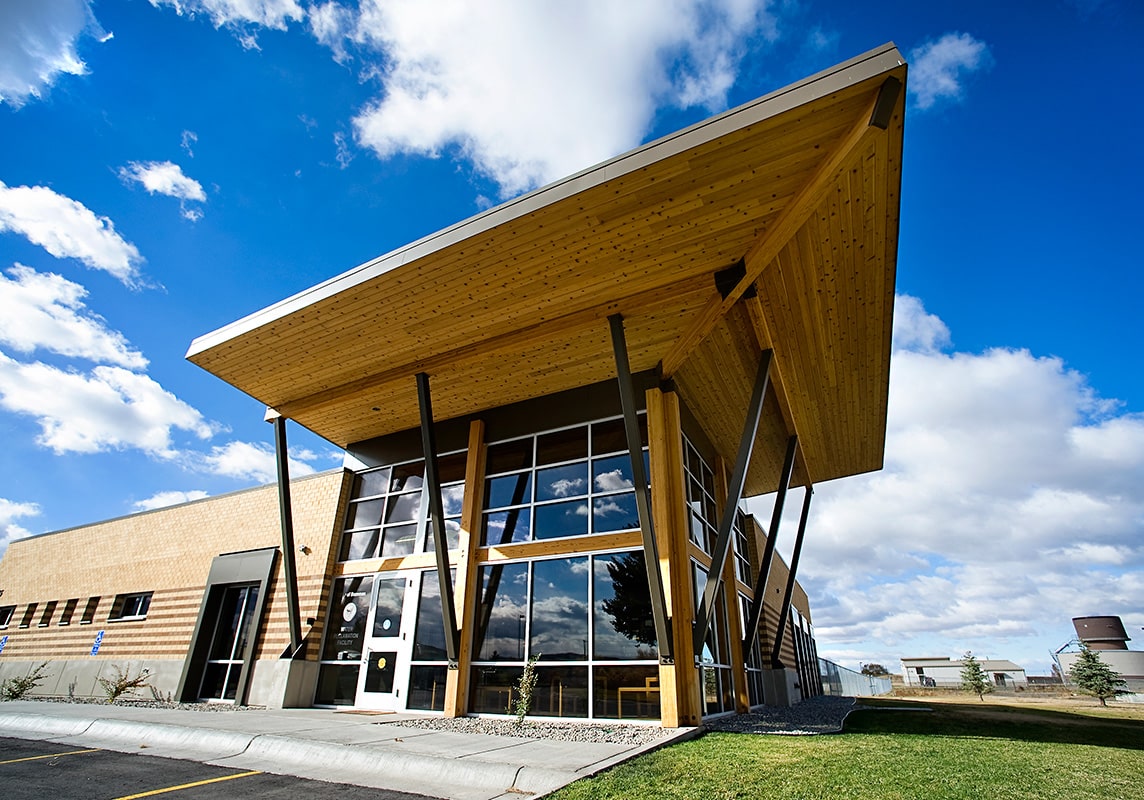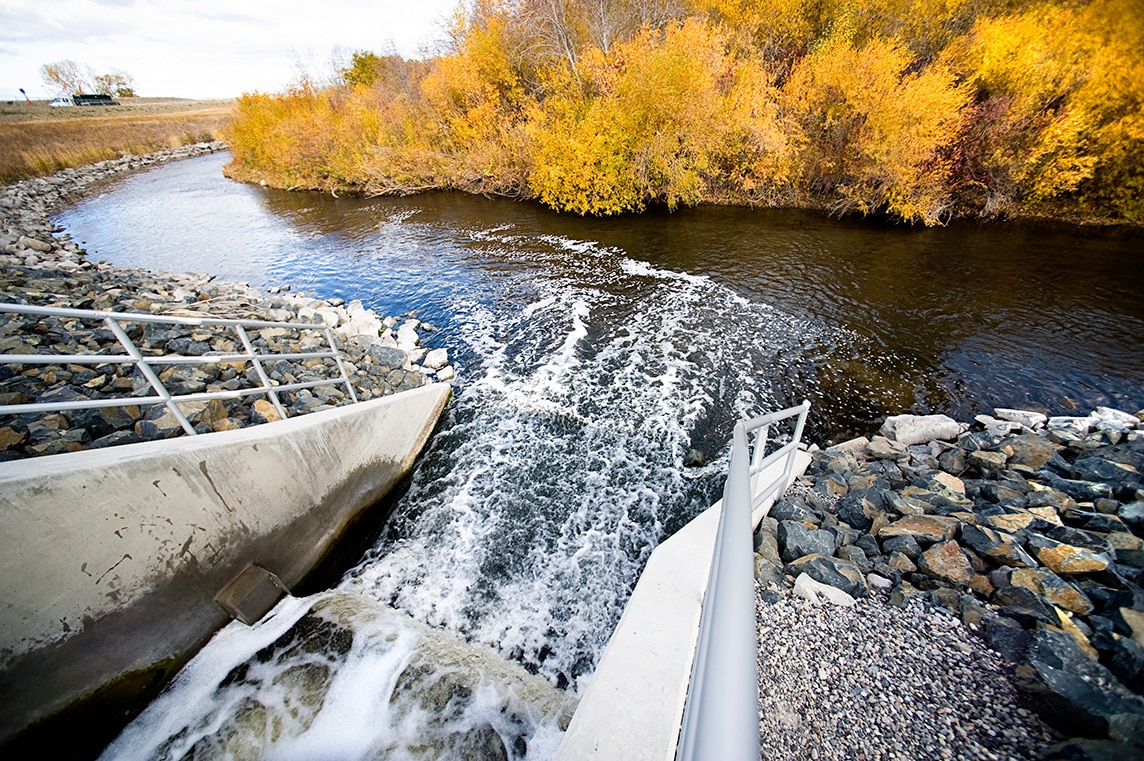
Bozeman Water Reclamation Facility
State of the Art and Ready for Growth
The City of Bozeman was facing three major drivers to upgrade its wastewater treatment plant. As the plant had reached its design hydraulic capacity, the loadings exceeded the design by approximately 10 to 20 percent to the point that violation of discharge limits was eminent. In addition, Bozeman was experiencing rapid population growth which was pushing the influent flows and loads even higher in a short period of time. In addition, the city’s new discharge permit included more stringent nutrient discharge limits and future permits were likely to contain extremely low nutrient limits.
The Montana Department of Environmental Quality (DEQ) developed the Total Maximum Daily Load (TMDL) for nitrogen and phosphorus, among other pollutants, for the East Gallatin River. This process determined the in-stream nutrient limits. Because the East Gallatin River experiences very low flows in the summer and elevated background nutrient concentrations, the permitted discharge limits for the Bozeman Water Reclamation Facility were extremely stringent. Since the plant effluent accounts for approximately 33 percent of the total summer flow to the river, the most environmentally sound use is to continue returning it to the river.
Services and Highlights
-
Engineering design
-
Construction administration
-
Structural design
-
Mechanical design
-
Electrical design
-
BIM 360 modeling
-
ABS blowers
-
5-Stage Bardenpho design
-
Dewatering screw press



The City of Bozeman approached these challenges proactively with a plan to meet today’s limits while keeping an eye on future requirements. One remarkable thing the city implemented was early-out improvements to its existing bioreactor. These consisted of running the existing bioreactor as Phased Nitrification Denitrification (PNDN) and improved their effluent quality just in time to meet their 2007 requirements.
The Bozeman Water Reclamation Facility (WRF) Phase 1 Improvements included the design of a state-of-the-art, 5-Stage Bardenpho process treatment. The advanced nutrient removal bioreactor will treat the wastewater and reclaim it to the levels needed to meet the interim effluent limits. In addition, the design called for implementing temporary modification of the existing plant processes to achieve immediate nitrogen and phosphorus reductions to ensure the City would not violate its discharge permit.
In conjunction with the secondary treatment process, decisions were made with a 20-year lifespan in mind. The new facility will treat a maximum monthly flow of 10.6 MGD to 7.5 mg/L total nitrogen and 1 mg/L total phosphorus. Infrastructure and hydraulics were designed around a peak hour flow of 25.4 MGD. Operational flexibility was included in all facets of the design and future expansion areas were identified and infrastructure was included where possible to allow for expansion without disruption to the existing treatment system.
The design also involved upgrades to multiple existing plant unit processes and infrastructure including new turbo blowers, RAS/WAS pumping, additional secondary clarifiers, unified fermentation and thickening, a new anaerobic digester and solids dewatering, screenings and grit removal, ultraviolet disinfection, an administration and lab building and a variety of other improvements.
Related Projects

Chinook Water Treatment Plant Improvements
With front-end planning and engineering, the City of Chinook has an updated water treatment plant capable of processing the turbid, and sometimes volatile, Milk River conditions.

Deer Lodge Wastewater Treatment Plant
With several physical constraints and obstacles to factor into this project, the City of Deer Lodge now has a long-term, cost-effective solution for its wastewater treatment.

Whitefish Water Treatment Plant
The Whitefish WTP Expansion project shows how necessary upgrades, reclassifying a facility, and fast-tracking equipment procurement can be accomplished on a rapid timetable.